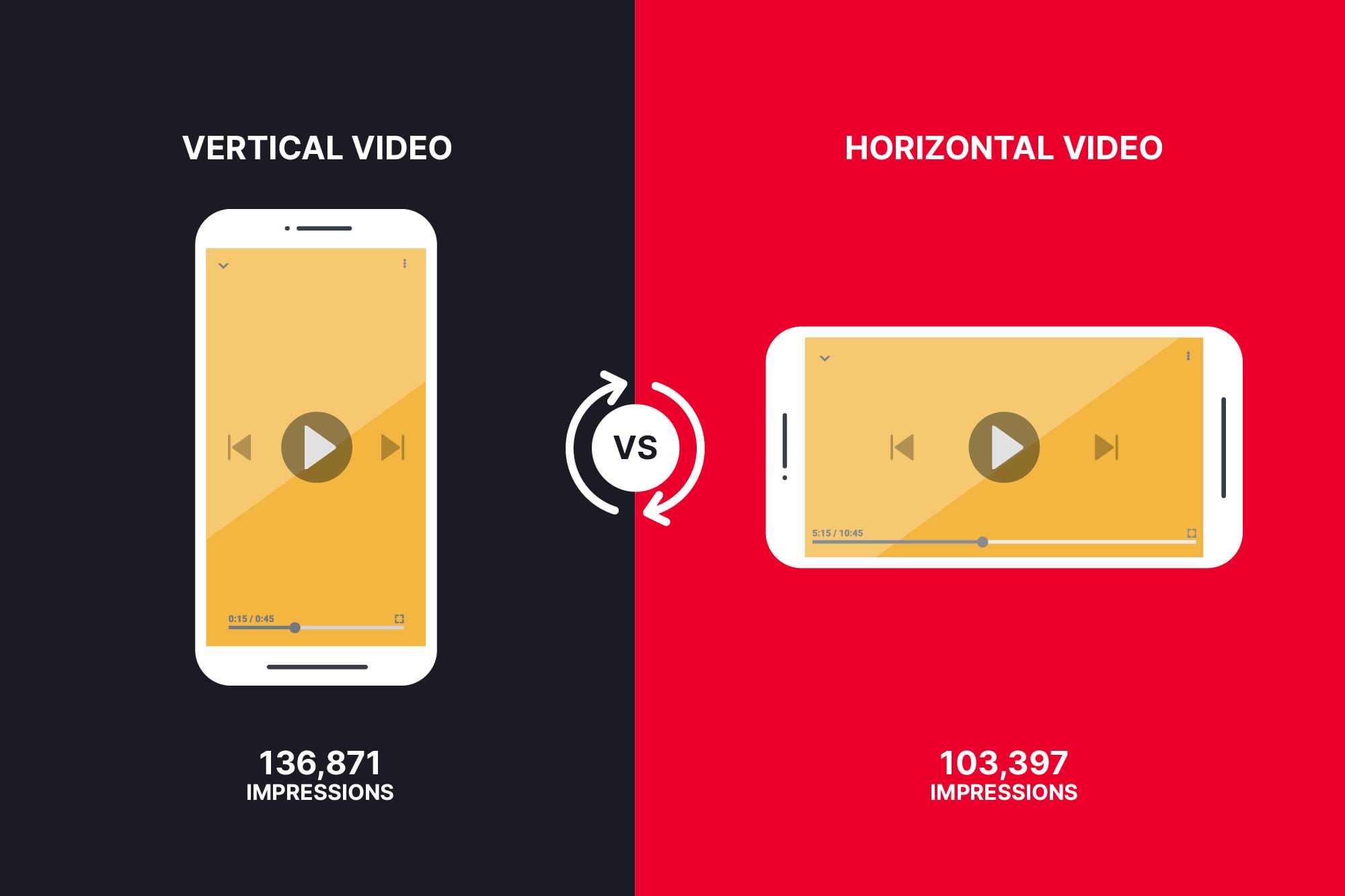Think about the last time you were at an event, say a gig or a birthday party, or maybe you were just stood next to someone on a bus? Did the sea of blue touchscreens have their phone in portrait or landscape mode when recording or watching something?
Vertical video is on the rise (mind the pun). I’m sure if you work in the social space, you’re probably nodding along in agreement right now. Whereas budding directors or cinematographers would possibly give a whole different take on the subject.
Like it or not, it seems the 9:16 ratio is here to stay, and the potential is massive…
I thought widescreen was the trend?
It was - and it still has its place - but the significant rise in vertical videos is largely thanks to the little ghost app, Snapchat, for the initial boost back in 2011. Prior to this, vertical video was widely an untapped entity. Although at the time smartphone usage was on the rise, YouTube was still the go-to outlet for video sharing, and watching and at the time still solely focused on the horizontal video player, making any vertical video look chunky and disproportionate.
Snapchat utilised smartphones by creating content that already fitted the way users were using their devices, meaning vertical video was no longer the filming of clueless budding videographers, but the go-to format for millennials and Gen Z and nearly everyone using a smartphone from here on out.
The only way is up
Since then the rise of smartphone usage has only forced more players to enter the game. Over half of videos on the internet are watched on phones and phones are interacted with vertically a whopping 94% of the time. Vertical videos also boast a 90% higher completion rate compared to horizontal video content.

Now we have TikTok and Instagram Reels, both jumping on the Snapchat vertical video trend. More importantly, the global video hub and once vertical-hater, YouTube, has now also introduced ‘Shorts’ and full-screen playback for vertical video.
With so many players in the game, it means vertical, smartphone footage is captured nearly every second of the day, changing the entire landscape current events are viewed and digested.
How can it work for me?
Vertical video gives you the opportunity to create personal content that viewers feel a real part of. The format can make it seem as if you’re speaking to the viewer individually, they can experience your service or product as if they’re sitting right there in the room with you.
It’s also a great way to share insight, knowledge, and expertise with your audience and get some brand advocates on board. Typically, influencers use TikTok and Instagram to connect with their audience and by default use vertical video to stylise these videos.
But this isn’t just for fashion or beauty, back in September we worked with a brand influencer to interact with our client’s audience in a brand-new way. It was the client's first time collaborating with an influencer as part of their social plan to increase engagement with their bi-annual competition, the World Crane Championships.
Using TikTok and Instagram, she was able to utilise vertical video to share her product knowledge, behind the scenes from the competition, racking up an impressive 700k+ views across her channels in just five days. This boosted Hiab’s brand generating positive and engaged conversations, making viewers feel like they were part of the event without actually being there. See more about how the strategy worked for them here.
Horizontal video will continue, of course, for TV and film this is all still widescreen, long-form content. But for your current day-to-day ‘what’s happening in the world’ content, the power of platforms like TikTok and Snapchat means we’ll see continued investment in vertical video simply down to how we all interact with our phones.
This only gives users another way to consume content and brands another way to tactically deliver it.
Can it work for me?
Embracing vertical videos and finding ways to make it work for you and your brand will only ever give you a broader canvas to work from and enable you to take full advantage of consumers' phone usage habits.
It’s hard to keep up with the ever-changing trends these days, it feels like only yesterday that 16:9 widescreen was the way forward and you’d be shunned for trying anything else. But the key to making videos that work for you and your business is being adaptable to trends, whatever they may be.
Luckily for you, our video team are agile and up to date with any new and emerging video trends. Get in touch and see how we could help you today: dcl@cwa.co.uk



